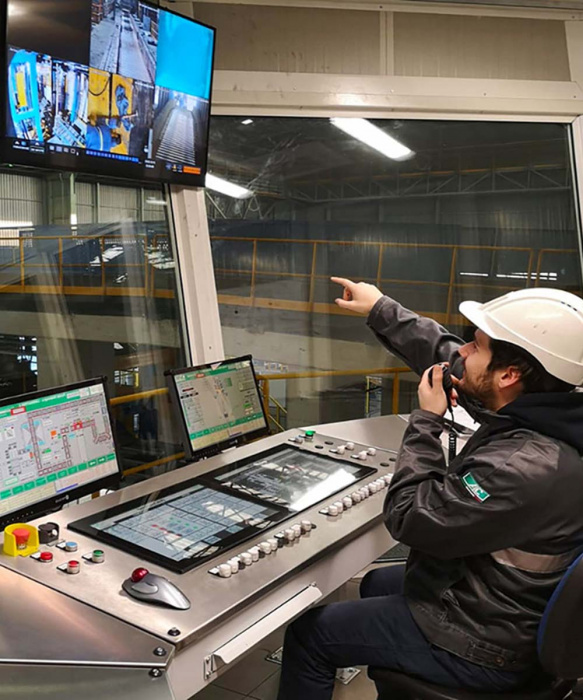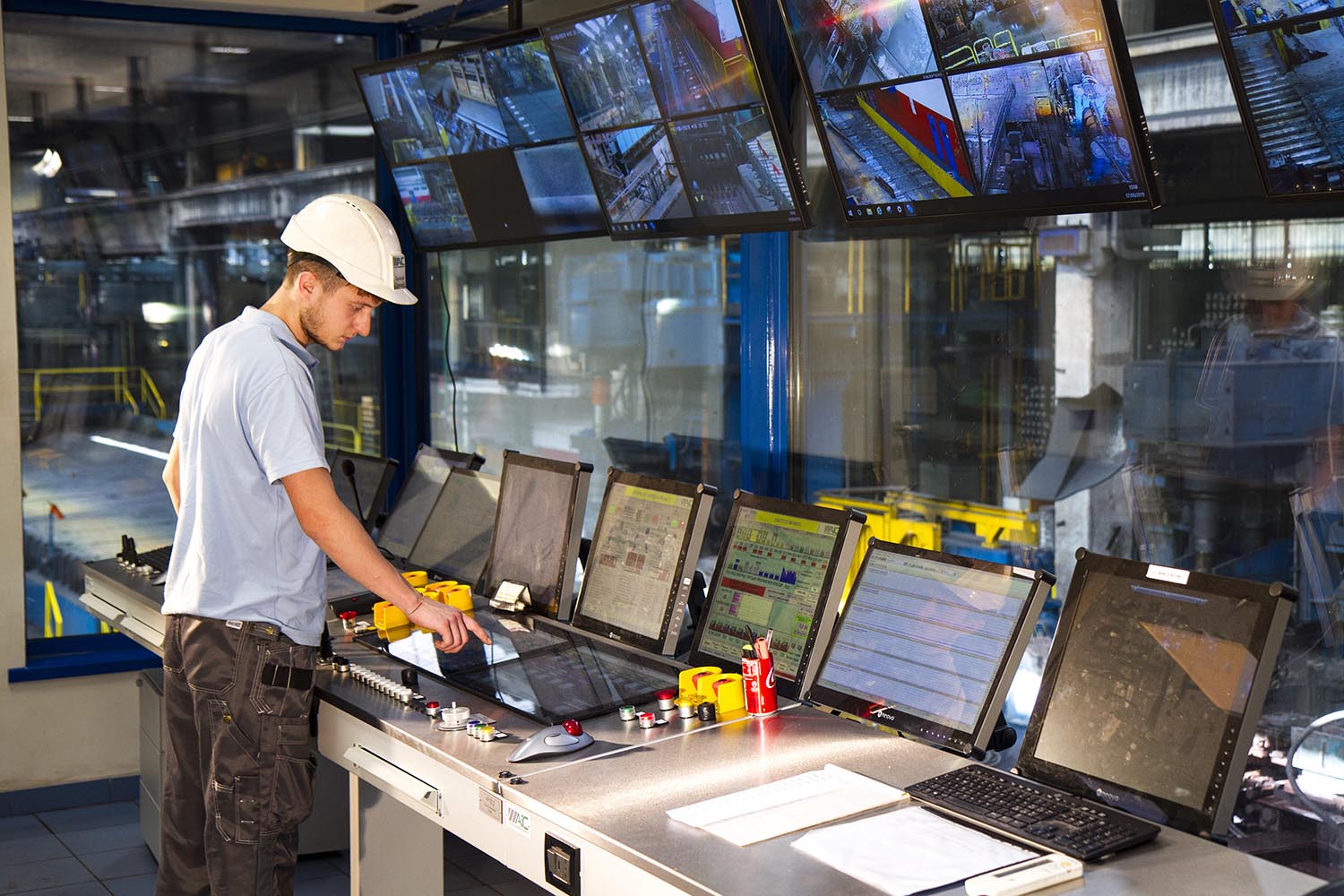Supervisory Control And Data Acquisition
By maximizing equipment management, the availability of real-time data, and the design of specialized HMI interfaces, SCADA systems are used in continuous flow production control within the steel industry production environment, turning clients' types of machinery and plants into an under-control instrument.
MANAGEMENT AND SCHEDULING OF PRODUCTION
For aligning manufacturing strategy, manufacturing execution, and real-time operations, agile and accurate real-time integration from business systems to plant execution (and vice versa) is critical.
This is made possible by real-time data uploads via cloud options, as well as real-time visibility updates of quantity, location, and inventory of material produced, while taking into account plant capacity and materials, line configuration, or the machines present.
All of this enables you to make quick decisions and make changes in unexpected circumstances.

TRACKING SYSTEMS
AIC has developed its own Tracking and Level 2 system, allowing enhanced features such as:
- Supervision, monitored and storage the production data
- Data exchange related to each different production phase
- Production reporting and analysis
- Standard and custom KPIs
- Management of delays
- Interface with corporate
- Level 3 and IT systems
Discover more

ALARMS AND EVENTS
When a relevant aspect of the operation is shown it is immediately stored as an alarm or event.
All the information like the behaviour of variables monitored by the system as real-time or stored information. Multilevel alarms could:
- Warning only
- Hold or delayed alarms (finish rolling and not take other billets until the alarm is active)
- Clear and stop (finish rolling and stop all involved machines/stands after the billet has laid on a cooling bed)
- Immediate stop or instantaneous alarm (component fault or trip condition, it may lead to automatic scrapping function on shears).
All alarms and events are stored on the HMI server and can be viewed by operators at the HMI stations by filtering only the alarms/events required.

RECIPES MANAGEMENT SYSTEM
A SQL-based recipe system is integrated into the HMI. It is a web-based application that can be included on the HMI or can be opened from any computer connected to the same network. It has a user administrator which can be defined as the users that can access the system and their rights to create, modify, delete or download recipes.
- Covering the operation of the mill from the RHF exit & continuous mill to the cooling bed. This includes stands, shears and RT
- Ability to edit and save configurations while maintaining original backup copies of recipes
- Ability to call up the next product recipe and visually show the difference between the current configuration and the next product recipe, even while the mill is running.

ROLL SHOP MANAGEMENT
Modern rolling mills keep track of the history of rolls and tools throughout their lifecycle. All relevant data is captured, processed, and archived in collaboration with the rolling workshop and production facilities. As a hardware architecture, a client/server architecture is used.
An active roll shop management system saves resources and supports delivery and quality by coordinating internal workshop activities as well as external suppliers and automating data collection from PLCs.
We create customized, modularly structured, and easily extendable roll shop management systems for the most stringent requirements.

ADVANTAGES OF OUR SYSTEMS
